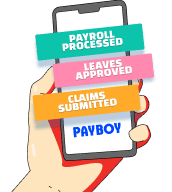As a business owner, managing expenses effectively is a crucial part of keeping your business running smoothly. Creating an expense reimbursement policy is therefore an important step in keeping track of your expenses and ensuring that employees are reimbursed fairly for their expenses. In this post, we'll outline the basics of expense reimbursement policies and provide some tips on how to create one that works for your business!.
What is an expense reimbursement policy and why do you need one?
A business expense policy is a document that outlines how your business will handle expenses incurred by employees. Having a clear and concise policy in place can help to avoid misunderstandings and disagreements about what is an acceptable business expense. It can also help to keep your business finances in order by providing guidance on what types of expenses need to be recorded and reported. Here are some of the key benefits of an expense reimbursement policy:
Cost savings
One of the most obvious benefits of having an expense reimbursement policy is the potential for cost savings. By preventing employees from incurring unnecessary expenses, businesses can save money that would otherwise be wasted.
Greater control
An expense reimbursement policy can give businesses greater control over their finances. By setting clear limits on what can be spent and how it can be spent, businesses can avoid surprises and better manage their budget.
Improved compliance
Another benefit of an expense reimbursement policy is improved compliance with company rules and regulations. By making it clear what is and is not allowed, businesses can help ensure that employees comply with expense-related guidelines.
Enhanced visibility
A well-designed expense reimbursement policy can also offer enhanced visibility into company spending. This increased transparency can help businesses identify and keep track of spending patterns, allowing them to make more informed decisions about where to allocate their resources.
Happier employees
Finally, an expense reimbursement policy can lead to happier employees. By taking the guesswork out of expense reimbursement, employees can avoid the frustration and stress that comes with trying to figure out whether their business expenses can be reimbursed or how to be reimbursed for their expenses.
How to develop an expense reimbursement policy for your company
Creating an expense reimbursement policy can seem like a daunting task, but it doesn't have to be. Here are some useful tips to develop a business expense policy for your business:
Define what expenses are covered
Be clear about what types of expenses are covered by your policy. Will you reimburse employees for business travel? Meals and entertainment? Training and development? Make a list of all the types of expenses that you're willing to cover.
Set spending limits
Once you've defined what types of expenses are covered, it's time to set spending limits. This will help prevent employees from overspending on business expenses.
Draft the expense reimbursement policy
Once you have defined the covered expenses and spending limits, it’s time to draft the expense reimbursement policy. Here are some key things to include in your business expense policy:
- A detailed breakdown of what expenses are eligible for reimbursement
- A limit on the amount that can be spent for each eligible expense
- Clear guidelines on when and how expenses should be submitted
- A process for submitting receipts and documentation for expenses
- Actions to be taken against violation of business expense policy
- The company may deny approval for any improper expenses that were incurred or claw back the reimbursement if it’s been processed
- In more serious cases, they may be subject to disciplinary actions, such as a warning, suspension, or even termination from their job
Communicate the policy to your employees
After finalising the expense reimbursement policy, make sure that all of your employees are aware of your business expense policy to avoid misunderstanding and violations down the road. You can do this by holding a brown bag session to share the policy, sending out a memo or email, or by posting the policy in a common area like the break room. For new joiners, It will also be good to include the expense reimbursement policy as part of the onboarding process.
Review and update the policy regularly
Your business expense policy is not set in stone. As your business grows and changes, so too should your policy. Be sure to review it regularly and make updates as needed.
By following the above steps, you can develop a business expense policy that will help keep your expenses in check!
Expense reimbursement policy template
Still not sure how to start? Here’s a simple policy template that can be easily adjusted to fit your business needs!
General rules
- The company will reimburse you for reasonable and necessary business expenses incurred while performing your job duties, in accordance with this policy. Some examples include:
- Meeting with clients or partners
- Attending conferences or events as a representative of the company
- Visiting offices in other countries
- All expense claims must be submitted and approved by your manager within 30 days of the date of the expense, along with supporting documentation (receipts, invoices, etc)
- Claims above $50 without supporting documentation may be denied for reimbursement
- Once expense claims are approved, the finance department will process the reimbursement by the following month’s payroll cycle (24th of each month)
Claimable list of business expenses
Here are some examples of common claimable business expenses which you can customise accordingly for your business!
Edit
| Covered expenses |
Amount limit |
| Business entertainment |
Up to $100 per month for client-facing employees |
Transport
•From office to meeting/event venue and vice versa |
Up to $25 per trip |
Office expenses
•Stationery
•Pantry items |
Up to $100 per month |
Event expenses
•Marketing collaterals such as brochure, banner, etc |
Based on approved budget |
Team bonding
•Team lunch or dinner
•Team bonding activity |
Up to $20 per employee per month |
Training and development
•Online or in-person courses to improve skill sets |
Up to $250 per year |
Travel expenses
•Air tickets
•Accommodation
•Travel insurance
•Per diem expenses |
•Based on approved list of air flights and accommodation
•Per diem expenses depends approved amount by country
•Other travel expenses to be approved by manager |
*This policy is subject to change at any time at the discretion of your company. Please check with your manager or HR representative for the most up-to-date version of this policy.
Benefits of using an expense reimbursement software
It can be time-consuming to manage employees’ claims manually on google sheets. If you're looking to save time and money on your business expenses, expense management software can be a valuable tool. Here are some of the benefits of using such a system:
- Automated expense tracking: expense reimbursement software can automatically track your business expenses, making it easy to stay on top of your spending.
- Reduced paperwork: with an expense reimbursement system in place, you can eliminate the need for paper receipts and expense reports. This can save you time and hassle.
- Increased efficiency: by automating expense tracking, you can free up time that would otherwise be spent on manual tasks. This can allow you to focus on more important tasks.
- Improved accuracy: with expense reimbursement software, you can be sure that your expense reports are accurate and up to date. This can help you avoid errors and discrepancies.
- Greater control: an expense reimbursement system can give you greater visibility into your business expenses, allowing you to more effectively manage and control your spending.
Simplify expense reimbursement with Payboy’s claim management module!
We hope this blog post has given you a good starting point for creating your own expense reimbursement policy! You can also check out our claims management module to help make the reimbursement process as smooth and easy as possible for both you and your employees:
- Paper-free submission: Employees can easily snap and submit their receipts with our mobile app
- Customisable claim policy: Different claim policies for different roles or projects? Set claim categories and claim limits based on roles and projects once and we’ll keep track for you.
- Approve with confidence: Claim approvals come with an audit trail, so you'll always know what was approved by whom
- Plays well with your accounting software: Sync claims directly with Xero, Quickbooks and Financio. Your finance team will love you!
Keen to have a free demo? Reach out to us below!





















